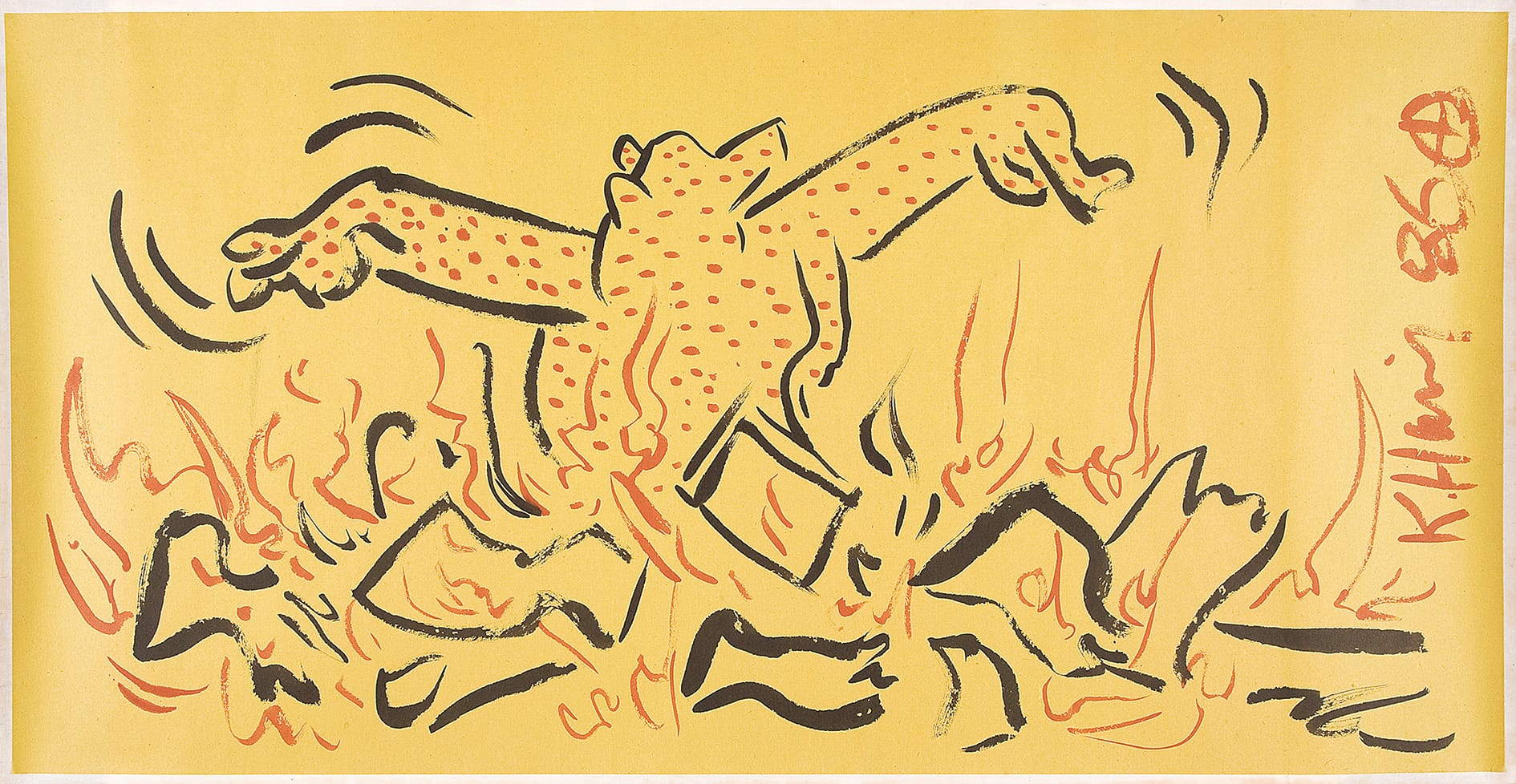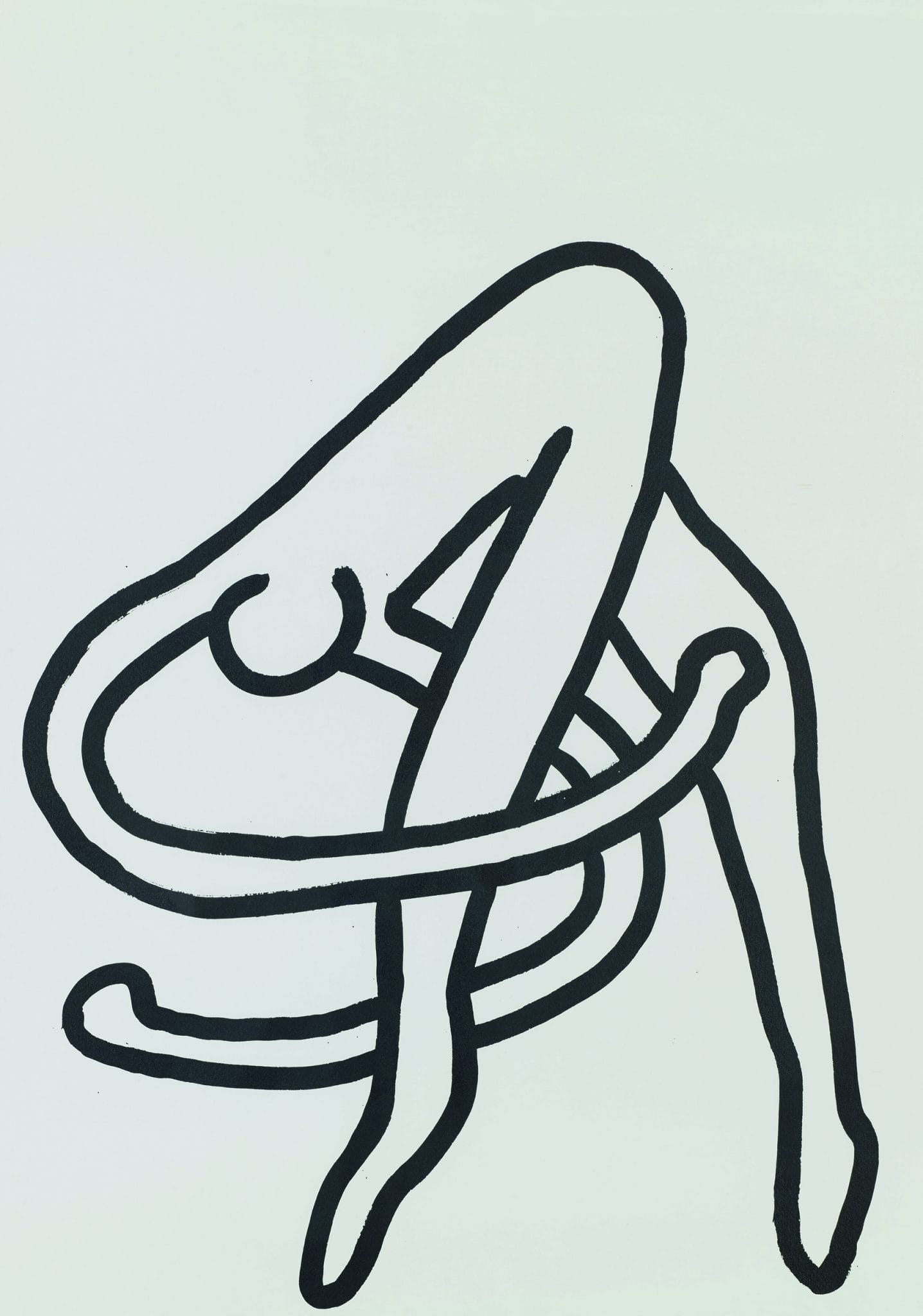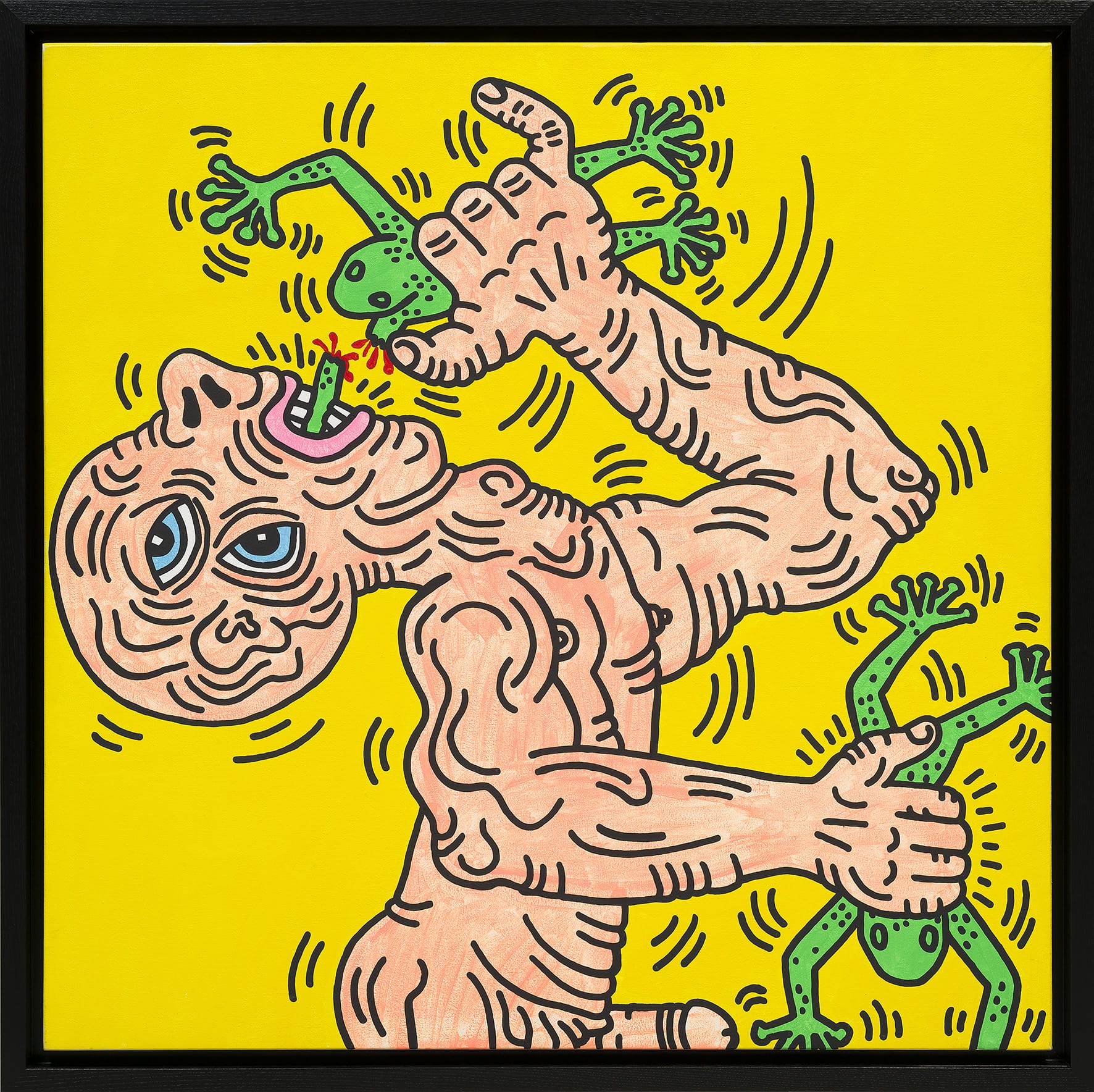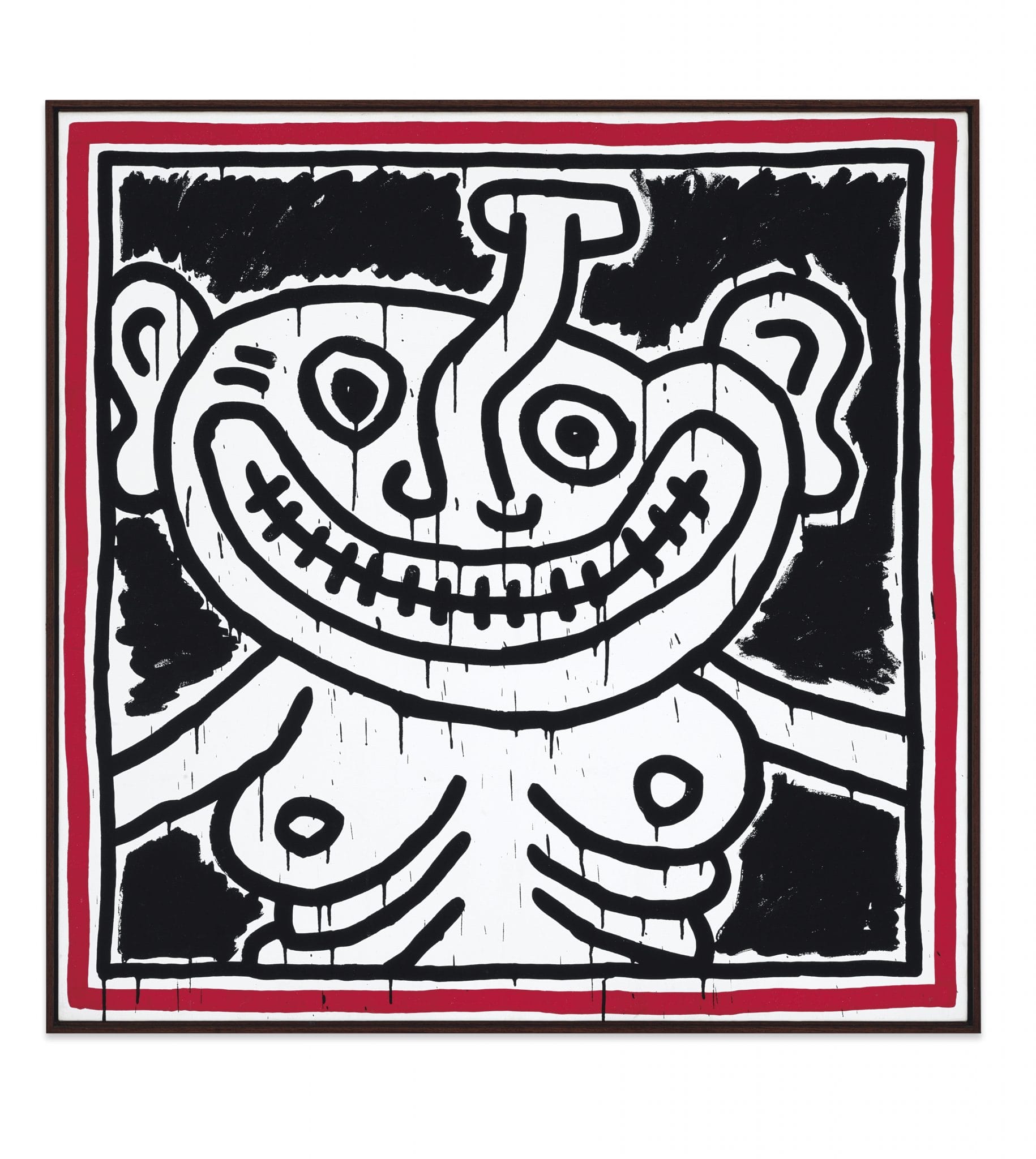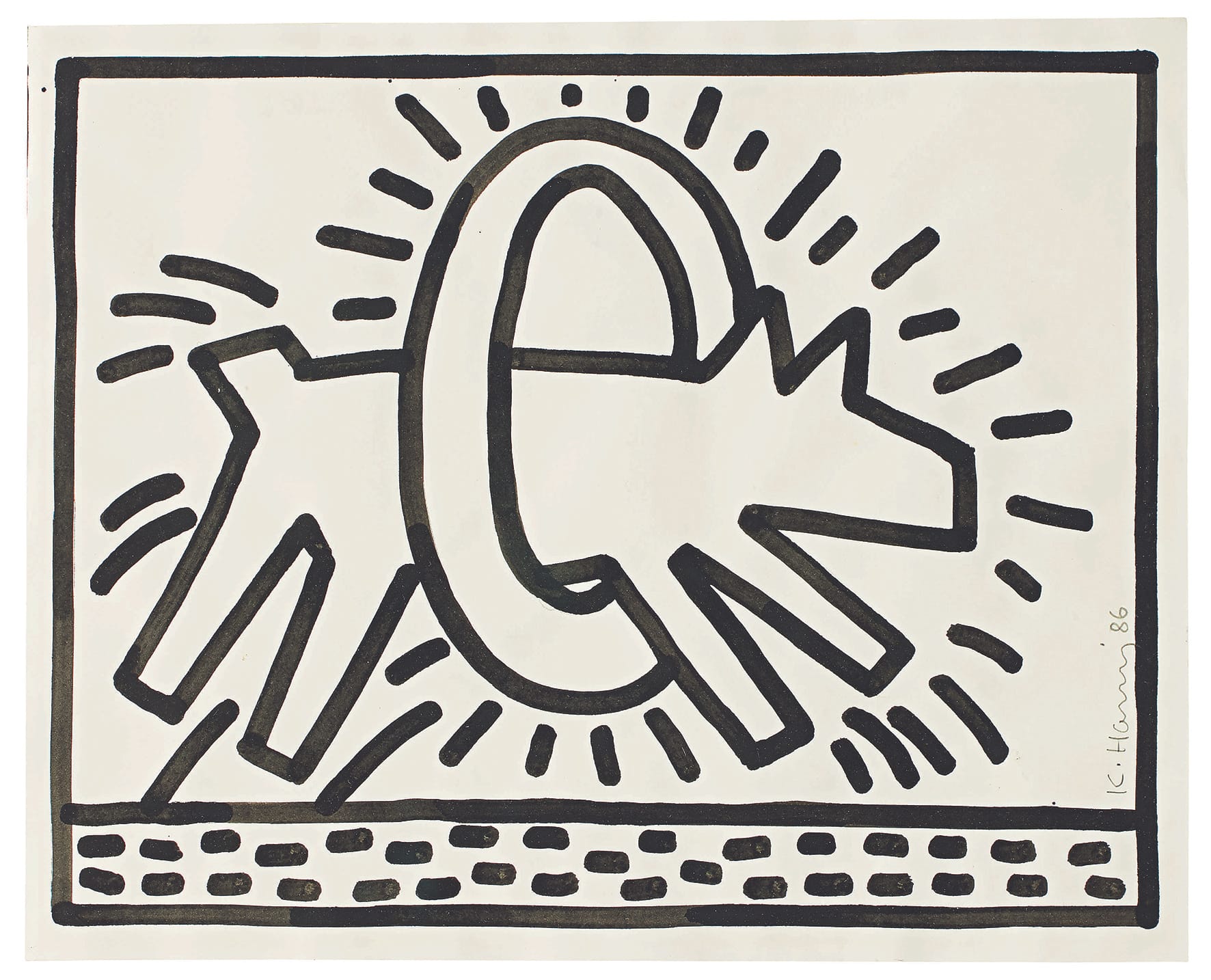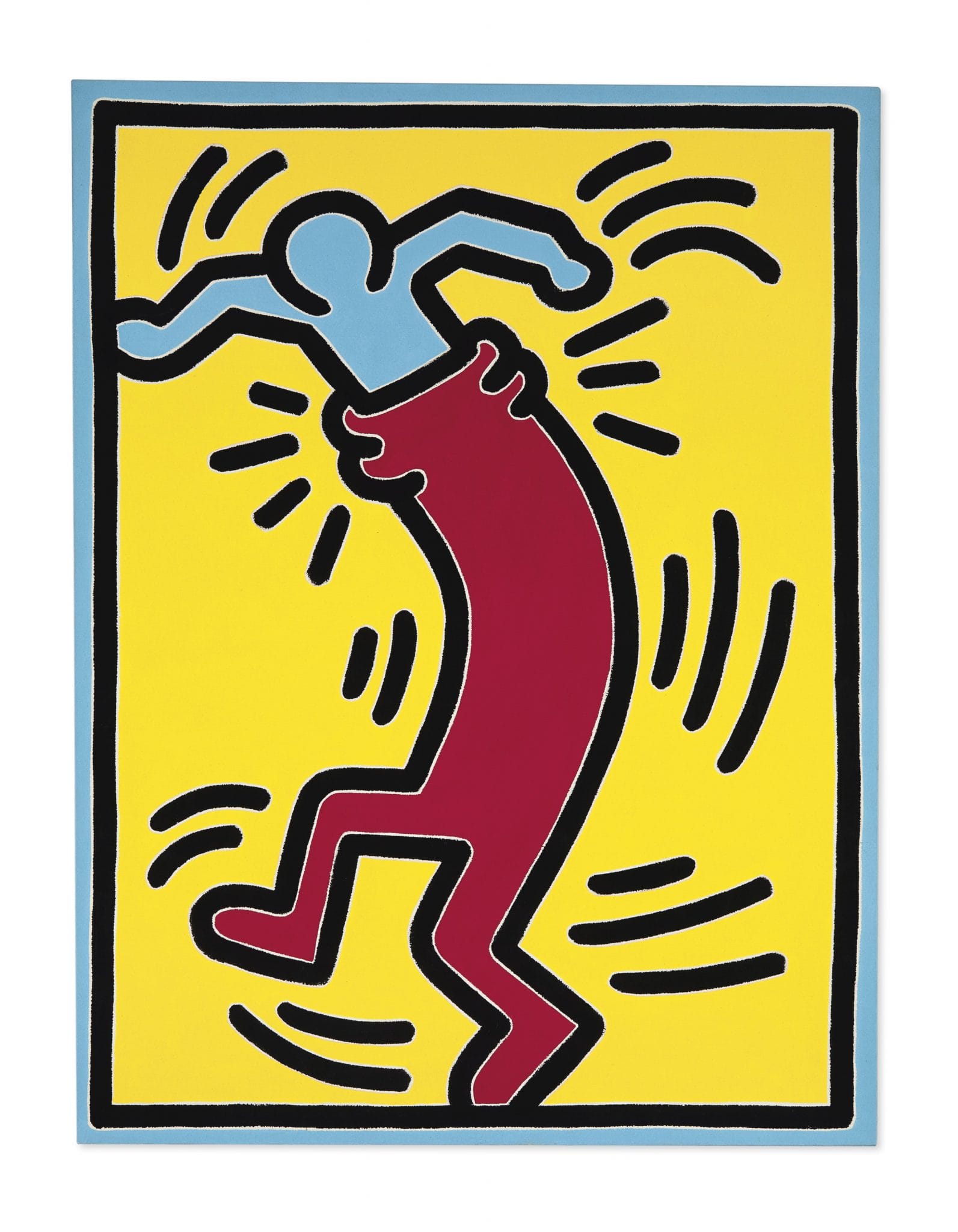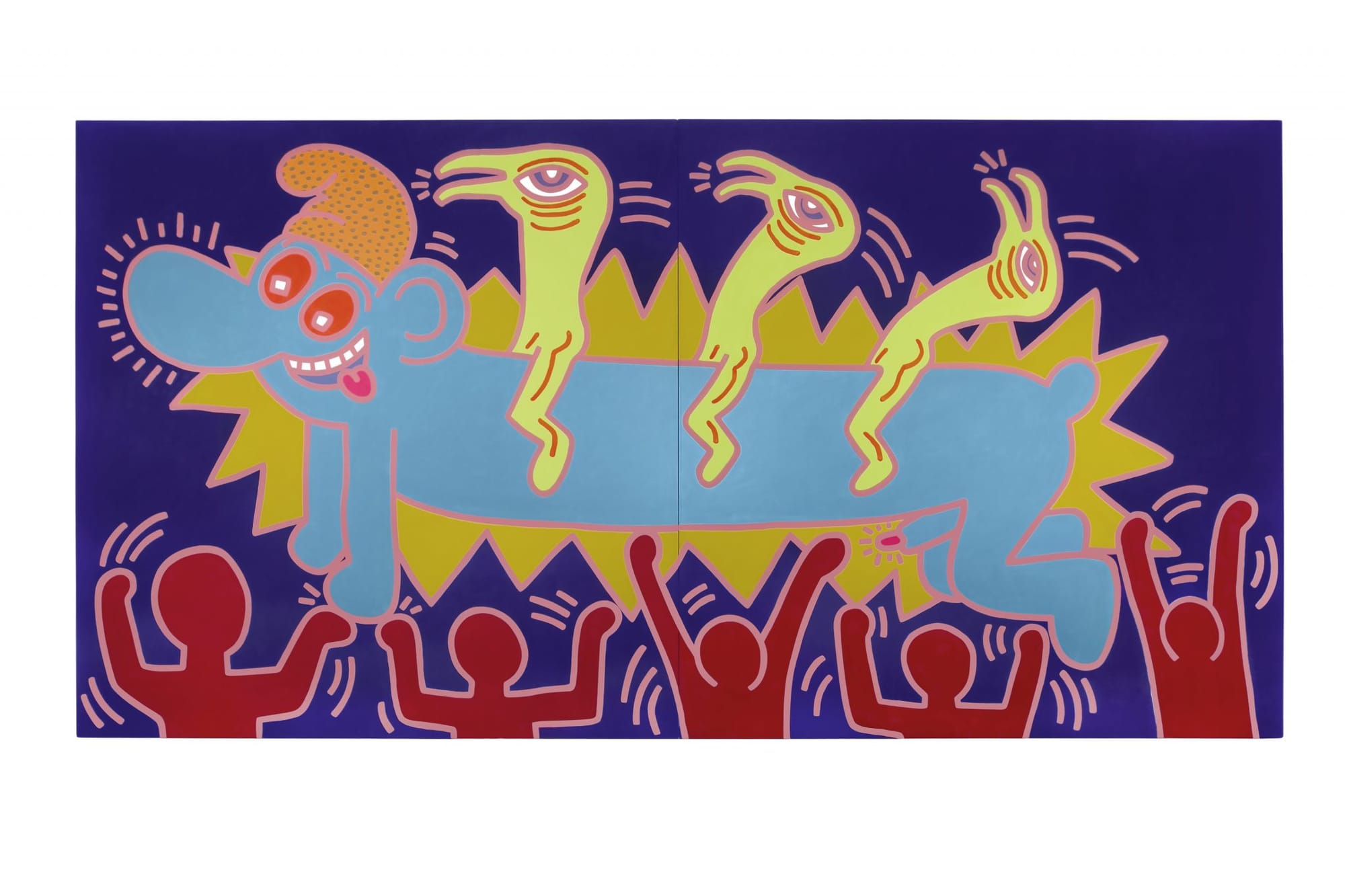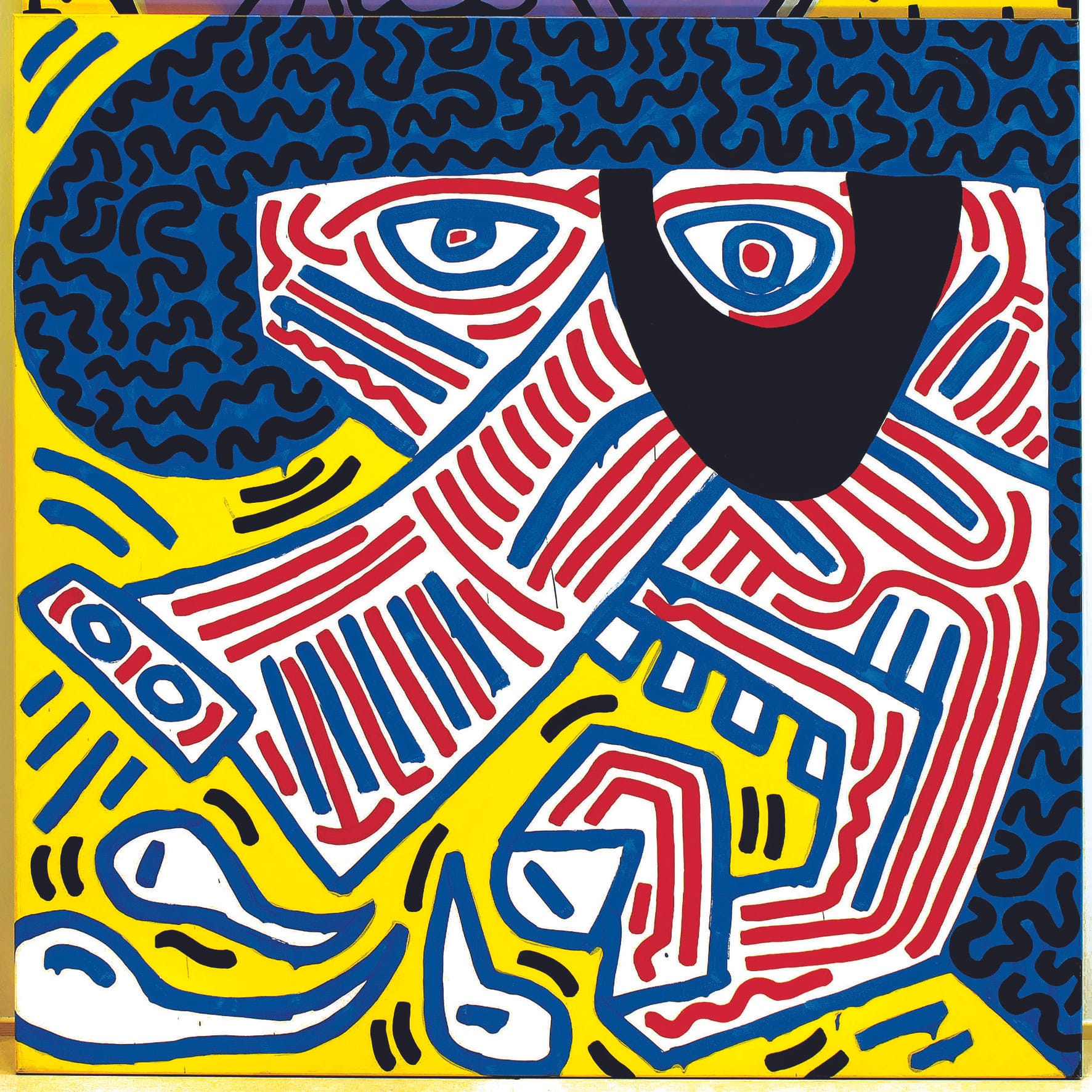100 Heroes: Keith Haring
The gay man who became one of his generation's leading artists.

Keith Haring was an American artist whose pop art and graffiti-like work grew out of the New York City street culture of the 1980s.
Haring’s work became popular through his spontaneous drawings in New York City subways – chalk outlines of figures, dogs, and other stylised images – presented on blank advertising-space backgrounds.
Haring’s later work often addressed political and societal themes – especially queer identities and HIV.
Haring died in 1990, of AIDS-related illnesses. He was 31.
The legacy of Haring’s short but prolific career has been profound. His art created a distinct visual language that continues to influence the creative world.
During his time in New York City, Haring was closely connected with Jean-Michel Basquiat and Andy Warhol.
